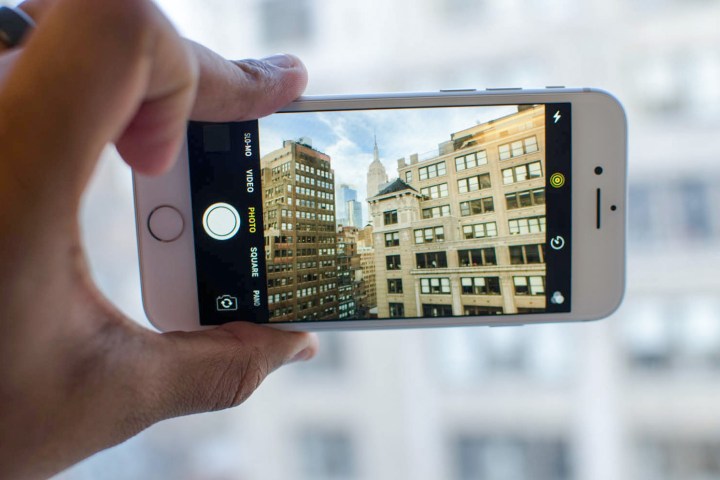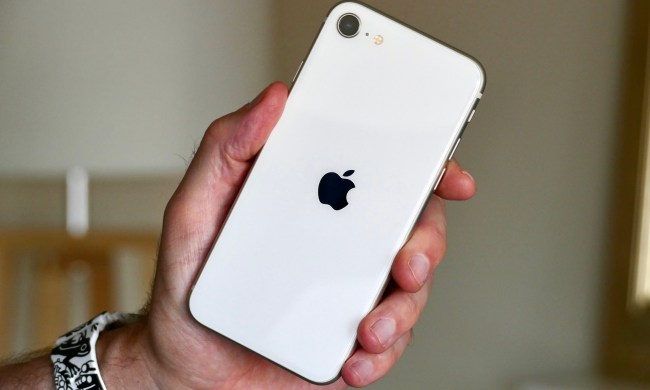
Since 2007, the independently-run iPhone Photography Awards have shined a light on some of the best works of photography captured on phones. Taking pictures on your mobile device can appear to be a pretty simple affair, but there are more than a few ways to get the best shot or infuse some artistic expression in your smartphone photos.
Apple’s iPhone is well-known for its prowess in quick, easy, and effective photo capture. These are precisely the reasons why professional photographer Sreekumar Krishnan, winner of the “Sunset” category in this year’s iPhone Photography Awards, chose to snap this winning photo with his iPhone 6S, rather than the mirrorless camera he had with him.
Driving on his way to shoot photos for a wedding in Bangalore, India, Krishnan spotted this large statue of the Hindu god Lord Rama, and knew the sky was about to bring something special to the scene. There was no time to set up his professional rig.

“It was immediate,” Krishnan told Digital Trends. “The clouds would have moved away and I would have lost the shot. The iPhone actually works better because back in the ’60s and in the World War days, everybody was shooting on point and shoot; the iPhone actually functions on the old school thought process … it’s much faster, you are in the moment, and you are not worried technically of how the aperture of the shot [looks]. All those things are immaterial. So [in shooting with an iPhone] it goes to the correct school of thought: ‘Composition, composition, composition.’ With phones, composition-wise, you get a better photograph.”
In fact, Krishnan did capture this same scene on his mirrorless camera. “It came out beautiful!” he recalled, but the moment had passed and consequently so did this photo composition.
“These are what you call ‘decisive moments’ in photography — it can’t be repeated again,” he said.
Sreekumar knows a thing or two about capturing the moment. With his pictures being used by the likes of Google, HSBC, and National Geographic among others, this was his first submission (and win) in the iPhone Photography Awards, though he has received honors in various contests (most recently The Black and White Spider Awards in January). This photo, a nature-themed, monochrome shot of a pelican on a lake, wasn’t shot with a smartphone, but using his iPhone as a regular photography tool is a normal part of his workflow.
“You need to shoot daily — the more you shoot, the better you become.”
“Most of the time I use my phone first, then afterward, my professional gear,” Krishnan said.
In the case of his winning iPhone photo, Sreekumar knew he had a winner on his iPhone and continued to edit it, on-device, with Photoshop Express. To further illuminate this exquisite shot, Sreekumar added “enhancements of contrast, and [adjusted] some of the colors for a ‘pop-up’ effect.” He then used Photoshop Express to remove some of the noise from the shot, as well.
Editing begins while composing the shot. Krishnan offered some tips for capturing shots like a pro on your iPhone, which can apply to most smartphones.
“I use AE/AF lock. First step is to tap to autofocus, second step is to do a long-press so that it locks the exposure, then you slide down the bar to improve the highlights. For the clouds to come in correctly, you need to reduce the exposure value – that’s what the slider’s for – otherwise you would lose that picture. Everything in the front would be colored and the clouds would be lost.”
- 1. Winner in People, Christine L Mace.
- 2. Winner in Still Life, Daniel Kafalas.
- 3. Winner in Children, David Booker.
- 4. Winner in Series, Dimpy Bhalotia.
Krishnan wasn’t always a pro though, spending 20 years in advertising before dedicating himself full-time to photography 7 years ago. Now a teacher of the art himself, Krishnan has a few tips for other aspiring amateur phone photographers.
“The critical thing is to keep shooting daily, number one, and experiment,” he said. “The phone is handy so you can experiment daily. Number two, use the long-press to get better images. Third, use different filters. In iPhones, you have Vivid Mode, that gives you a different perspective. And use black and white. You need to shoot daily — the more you shoot, the better you become.”
The full list of winners in the iPhone Photography Awards can be found on the organization’s website. You can follow Krishnan’s work on his Instagram.







